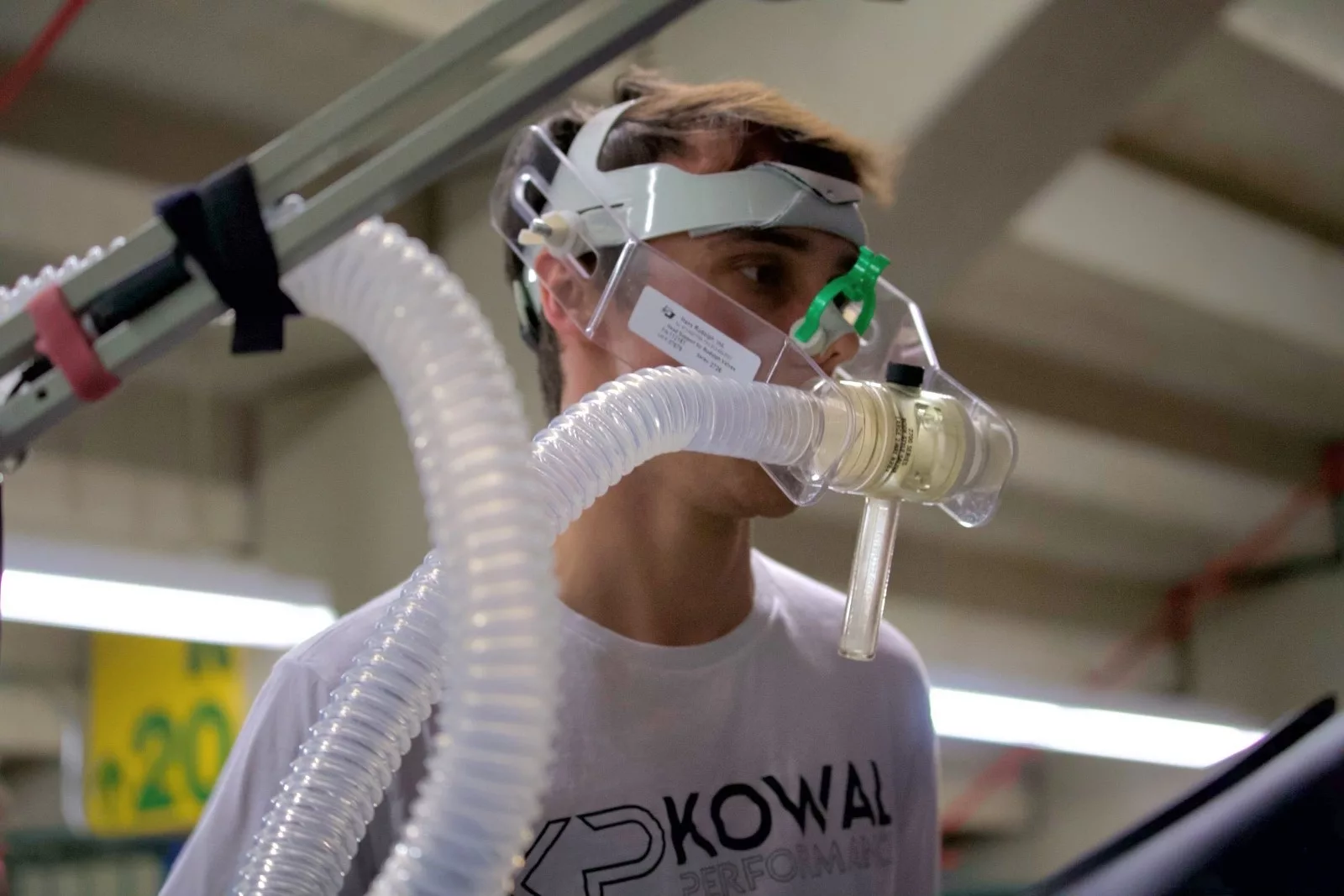
VO2 Max: What is it and how do we train it?
VO2 max, often referred to as the pinnacle of aerobic fitness, represents the maximum amount of oxygen an individual can take in and utilize during exercise. Whether you’re into running through the many Edmonton trails, riding our beautiful river valley, or just general fitness, understanding your VO2 max can provide valuable insights into your cardiovascular health and endurance capabilities.
Aerobic vs. Anaerobic Metabolism: What’s the Difference?
Before diving deeper into VO2 max, it’s essential to understand the fundamental differences between aerobic and anaerobic metabolism. These systems provide the body with energy by converting glucose, the body’s main source of energy, into ATP, the form of energy used and stored at a cellular level.
- Aerobic Metabolism: This process uses oxygen to convert glucose into energy. It’s the primary energy system during prolonged, low-intensity activities like long-distance running or cycling. The byproducts are carbon dioxide and water, which are easily eliminated by the body.
- Anaerobic Metabolism: This process does not require oxygen and produces energy quickly. It’s the dominant energy system during short, high-intensity activities like sprinting or lifting heavy weights. However, it produces some negative byproducts, which can lead to muscle discomfort and fatigue.
Understanding these two metabolic pathways is crucial as VO2 max primarily focuses on the aerobic system’s efficiency.
What Exactly is VO2 Max and How is it Measured?
VO2 max, short for “volume of oxygen maximum”, is a measure of the maximum rate that a person can take in and utilize oxygen to generate energy. It’s a key indicator of an individual’s aerobic endurance and cardiovascular fitness. To measure VO2 max, individuals typically undergo a graded exercise test on a treadmill or bicycle. The intensity of the exercise increases incrementally until the individual reaches their limit. Throughout the test, the volume of oxygen consumed is monitored, and the point at which oxygen consumption plateaus, despite an increase in exercise intensity, is the VO2 max.
Physiological Factors Affecting Our VO2 Max
Several factors, both modifiable and non-modifiable, influence our VO2 max:
Modifiable Factors:
- Training: Regular aerobic exercise can enhance VO2 max by improving both central and peripheral factors that affect VO2 max.
- Central Factors Affecting VO2 max: Factors general to your cardiovascular system such as your heart’s ability to pump oxygenated blood out to working muscles.
- Peripheral Factors Affecting VO2 max: The ability of specific muscles to extract and utilize oxygen from blood to generate energy for activity.
Non-Modifiable Factors:
- Age: VO2 max tends to decrease with age.
- Gender: Men typically have a higher VO2 max than women due to differences in anatomy and hemoglobin levels.
- Genetics: Some individuals are naturally predisposed to have a higher VO2 max.
Information Gained from a VO2 Max Test
A VO2 max test provides more than just the maximum oxygen consumption rate. It can also predict your aerobic/anaerobic threshold, which is the intensity of exercise that aerobic metabolism can no longer meet the energy demands and anaerobic metabolism must increase its contribution.
Using VO2 Max to Guide Training
Understanding your VO2 max and associated thresholds can help to quantify your physiological training zones which can be invaluable for training:
- Aerobic Zone: This is your easy training zone, ideal for recovery or long slow distance runs. The energy demands while working in this zone are primarily met through aerobic metabolism and this intensity can commonly be maintained for an extended duration.
- Threshold Zone: In this zone people typically find the maximum intensity of exercise they can sustain for a prolonged period. This is the intensity athlete’s will often refer to as their “race pace”. Energy production is beginning to shift from primarily aerobic sources to include more anaerobic energy production, and therefore negative byproducts begin to accumulate and contribute to fatigue.
- VO2 Max Training: At this point you will be getting a significant amount of your energy from anaerobic metabolism. In this zone you will not be able to maintain exercise for very long and you will likely need to break training in this zone into manageable intervals separated by rest periods.
If you would like to learn more about training zones and thresholds, check out our “A Beginner’s Guide to Training Zones (VO2 Max) and Thresholds” article.
In the realm of exercise physiology, VO2 max stands as a testament to our body’s incredible adaptability and potential. From the role of genetics to the impact of training, numerous factors influence our aerobic capacity.
For those in Edmonton looking to delve deeper into their fitness journey, Connect Physiotherapy & Exercise can help. Through our partnership with the University of Alberta’s Sport and Heath Assessment Centre we can have your VO2 max tested using gold standard, lab quality equipment. We also offer packages that include testing and training in one package. Learn more about about our fitness testing that includes VO2 max testing today.

